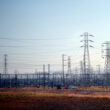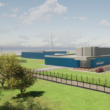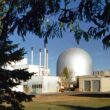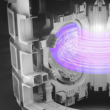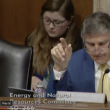Pro-industry priorities derail NRC’s public-safety mission
By Victor Gilinsky, May 30, 2008
The Nuclear Regulatory Commission’s (NRC) problems lie in the priorities at the top. The overriding priority–evident from commission pronouncements and actions–is to facilitate a major expansion, or “renaissance,” of nuclear power. That’s okay elsewhere in the federal government, but not at the NRC because it gets in the way of public safety and conducting fair proceedings.
This is especially evident in the licensing review of Nevada’s Yucca Mountain, the site the Energy Department proposes as the country’s high-level nuclear waste repository. The nuclear “renaissance” is said to depend on NRC approval of Yucca Mountain, and, thus far, the NRC has been accommodating. I’d like to provide a couple of examples based on my experience as a Nevada consultant–one example deals with safety and the other with fairness.
The most disappointing aspect of NRC’s role in Yucca Mountain is that it has agreed to toss overboard what has heretofore been the sine qua non of its safety philosophy–“defense-in-depth.” Consequently, Yucca Mountain radiation standards are much more lax than repository standards in other countries.
To explain the lack of defense-in-depth at Yucca Mountain requires some background. About 12 years ago, Energy discovered that supposedly dry Yucca Mountain had lots more water than estimated. It was moving a lot faster too, which meant the site wouldn’t retain radioactive waste leakage. To keep the project alive despite this, Energy decided to put a near-total reliance on metal containers to retain the waste. Earlier, the NRC had warned against this approach when it approved Energy’s geologic site criteria. But when push came to shove, the department kept the site and dropped the troublesome criteria and NRC went along.
To keep corrosive water off the containers, Energy dreamed up the “drip shield”–a heavy titanium alloy cover that would run the length of each tunnel containing waste containers. But Energy doesn’t plan to actually make or install the enormously expensive shields for 100 years or more, which makes installation a pretty doubtful proposition, even more so because it will be difficult to maintain a remotely operated underground transport system for that long. But without counting the drip shield, Yucca Mountain can’t come close to passing federal radiation dose standards. And there’s no backup. Naturally, Energy insists the NRC should assume the drip shield will be in place, however implausible that is. Sad to say, the current NRC has been going along with this absurdity despite its 1998 white paper. That paper states: “The defense-in-depth philosophy ensures that safety will not be wholly dependent on any single element of the design, construction, maintenance, or operation of a nuclear facility.” The NRC website’s current definition of defense-in-depth drops this language. All the while, it insists it’s holding fast to design-in-depth.
My other example is the “waste confidence” issue. Since 1986, the NRC has had a rule against public challenges to reactor licensing based on the argument that there’s no place for the waste to go. The rule states that the NRC is confident a geologic repository will be available by 2025. By now, however, that can only mean Yucca Mountain. So while the commission claims it will hold a fair licensing hearing, its rule–binding on its administrative judges–says in effect that the commission is confident the license will be approved. To avoid the rule’s obvious pressure on NRC staff and judges, Nevada petitioned the commission to simply drop the specific date and just say that the it is confident spent fuel will be taken care of responsibly. Instead, the commission told Nevada to go fly a kite. But suddenly, the NRC is more receptive now that the industry worries Yucca Mountain won’t be ready by 2025 and that the current rule might impede reactor licensing.
Topics: Nuclear Energy
Share: [addthis tool="addthis_inline_share_toolbox"]


